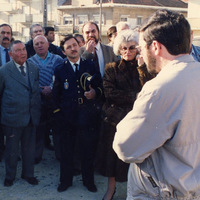Luis Barros
Universidade de Évora, CHAIA | Arqueologia, Faculty Member
- Ritual and Performance (Egyptology), Amarna Studies, Ancient Egyptian Iconography, New Kingdom (Egyptology), History of Egyptology, Phoenician, and 27 moreAncient Egypt, Archeologia Fenicio-Punica, 1st Millennium BC (Archaeology), Tartessos, Ancient Metallurgy, Phoenician Punic Archaeology, Iron Age Iberian Peninsula (Archaeology), Edad Del Bronce, Metalwork (Archaeology), Mediterranean archaeology, Iron Age (Archaeology), Late Bronze Age, Neolithic & Chalcolithic Archaeology, Funerary Archaeology, Archaeometallurgy, Archaeology of Mediterranean Trade, Bronze Age Europe (Archaeology), Bronze Age, Archaeology, Phoenicians, Protohistoric Iberian Peninsula, Late Bronze Age archaeology, Protohistory, Bronze Age (Archaeology), Mediterranean Studies, Syro-Palestinian archaeology, and E-learningedit
... 6) foram recolhidos diversos fragmentos de caçoilas e frigideiras de pegas triangulares, cerâ‑ micas modeladas, alguidares em barro fosco e vidrados, fogareiros, testos, malgas e pratos esmal‑ tados a branco, faiança majólica italiana... more
... 6) foram recolhidos diversos fragmentos de caçoilas e frigideiras de pegas triangulares, cerâ‑ micas modeladas, alguidares em barro fosco e vidrados, fogareiros, testos, malgas e pratos esmal‑ tados a branco, faiança majólica italiana e holandesa, porcelana chinesa da ...
Research Interests: Archaeology and Art
Research Interests:
Research Interests:
Research Interests:
Texto de divulgação do potencial arqueológico de Santa Margarida publicado pelo BIMEC/Exército Português
Research Interests:
Research Interests:
Estrato da publicação dedicada ao Concelho de Almada - 1993
Actas das 2ª Jornadas de Estudos Sobre o Concelho de Almada, 1996
